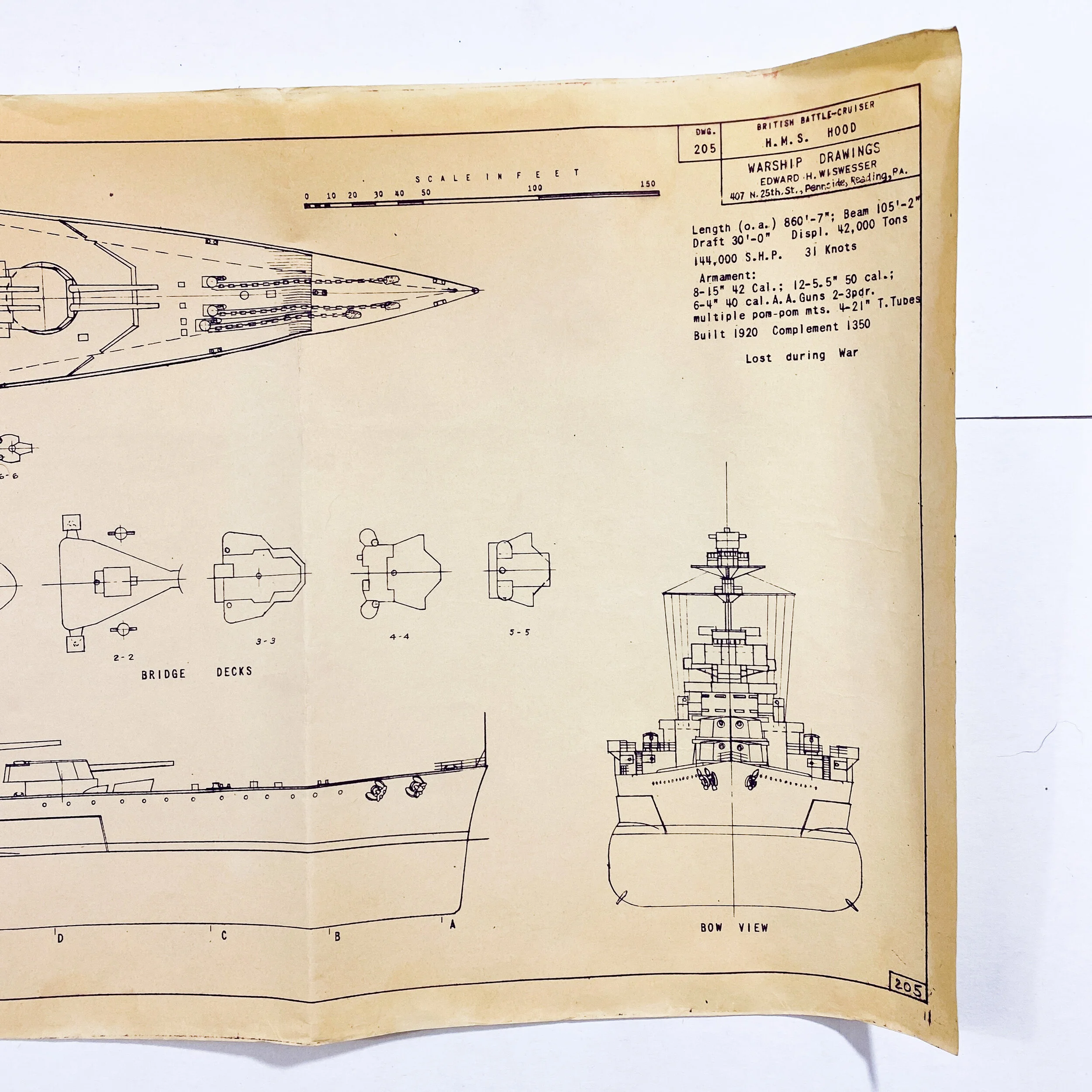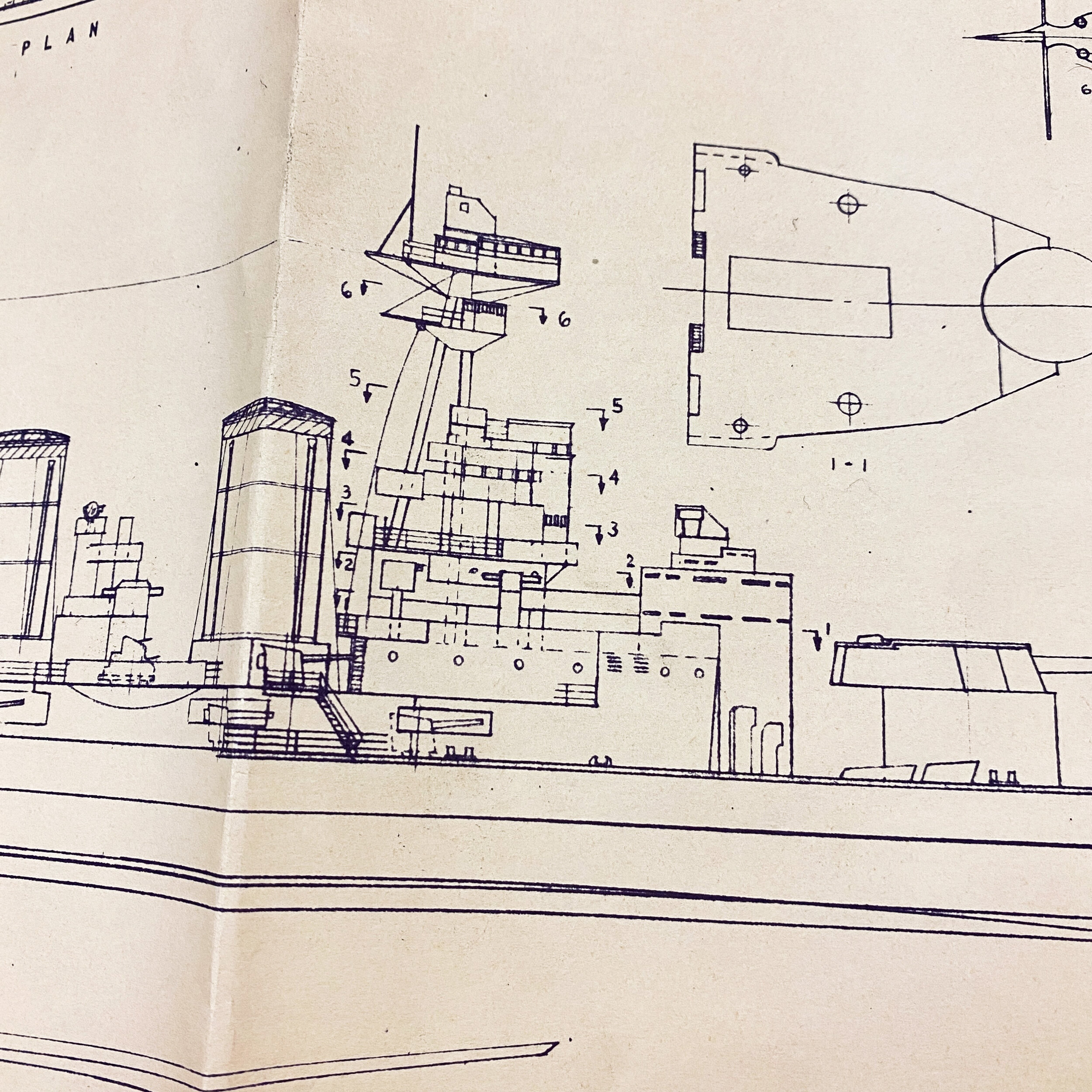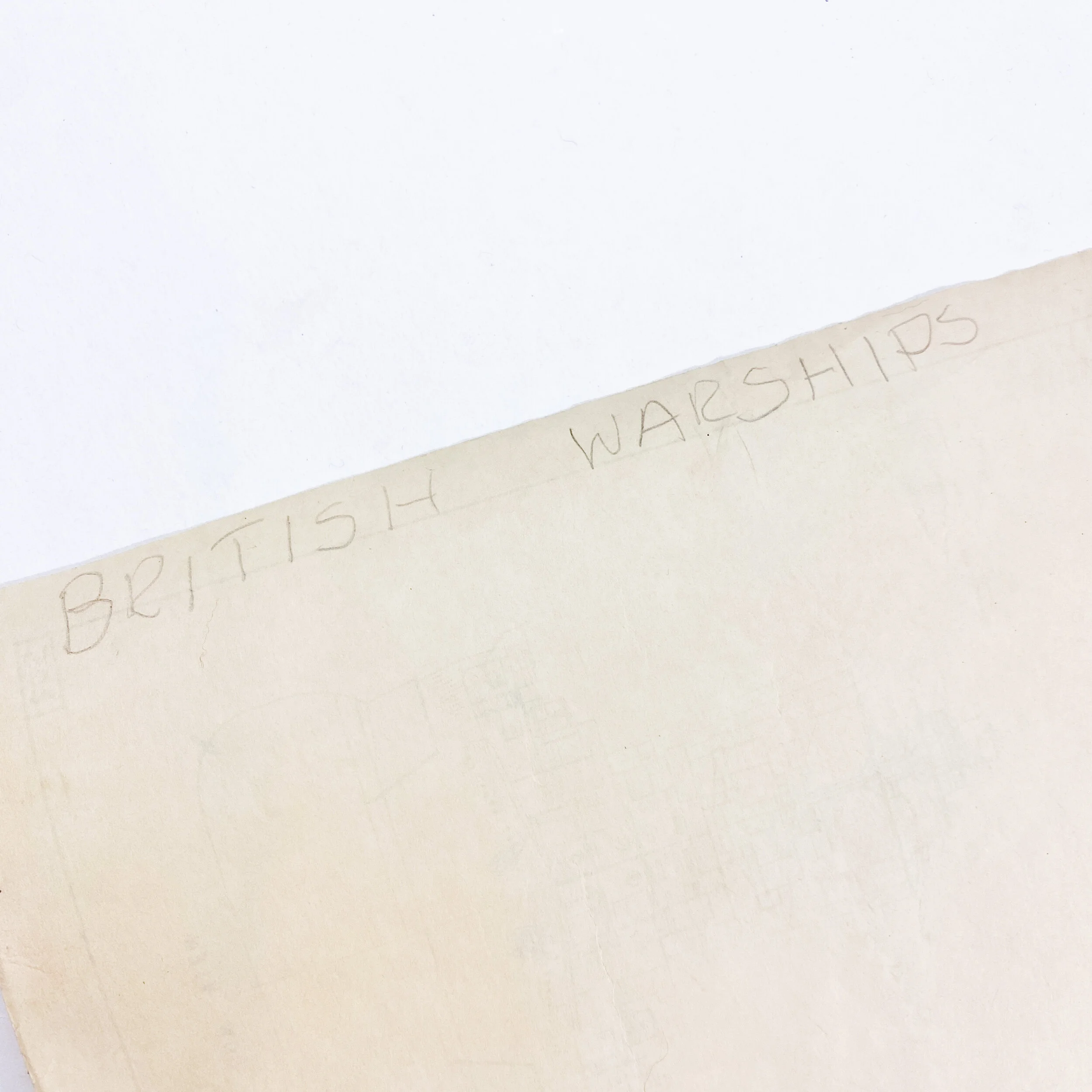British Battle-Cruiser H.M.S. Hood Layout Blueprint - Drawing 205 - Edward H. Wiswesser
















British Battle-Cruiser H.M.S. Hood Layout Blueprint - Drawing 205 - Edward H. Wiswesser
From the personal blueprint collection of Edward H. Wiswesser.
Size: 12 x 34 inches
This blueprint comes from the blueprint collection of the famous Edward H. Wiswesser. From 1940-1946, Edward H. Wiswesser worked at the Philadelphia Naval Yard designing warships for the United States Navy, specializing in Iowa-class battleships including his direct hand in designing the Battleships USS New Jersey and the USS Wisconsin. His design of the USS New Jersey was one of the Iowa-class "fast battleship" designs planned in 1938 by the Preliminary Design Branch at the Bureau of Construction and Repair. She was launched on December 7th of 1942 (the first anniversary of the attack on Pearl Harbor) and was commissioned on 23 May 1943. The ship was the second of the Iowa class to be commissioned by the U.S. Navy. The USS New Jersey (BB-62) ("Big J" or "Black Dragon") was the second ship of the United States Navy to be named after the US state of New Jersey. New Jersey earned more battle stars for combat actions than the other three completed Iowa-class battleships, and was the only US battleship providing gunfire support during the Vietnam War. During World War II, New Jersey shelled targets on Guam and Okinawa, and screened aircraft carriers conducting raids in the Marshall Islands. Edward H. Wiswesser other design of the USS Wisconsin (BB-64) is an Iowa-class battleship, the second ship of the United States Navy to be named in honor of the U.S. state of Wisconsin. She was built at the Philadelphia Naval Shipyard in Philadelphia, Pennsylvania and launched on December 7, 1943 (the second anniversary of the Pearl Harbor raid), sponsored by the wife of Governor Walter Goodland of Wisconsin. During her career, Wisconsin served in the Pacific Theater of World War II, where she shelled Japanese fortifications and screened United States aircraft carriers as they conducted air raids against enemy positions.
This specific blueprint is labeled as drawing number 205 and is titled “British Battle-Cruiser H.M.S. Hood’. The blueprint itself is also title ‘Warship Drawings’ and contains the name of Edward H. Wiswesser himself. The blueprint contains some of the most detailed and intricate constructional layouts of the ship as well as detailed measurements of its length, knot speed, arraignment, guns and turret attachments.
This Naval blueprint of one of the most infamous ships of WWII used during Operation Catapult as well as the Battle of Denmark Strait. This blueprint would make an amazing addition to any World War II or Navy collection.
H.M.S. Hood:
Captain Irvine Glennie assumed command in May 1939 and Hood was assigned to the Home Fleet's Battlecruiser Squadron while still refitting. When war broke out later that year, she was employed principally to patrol in the vicinity of Iceland and the Faroe Islands to protect convoys and intercept German merchant raiders and blockade runners attempting to break out into the Atlantic. On 25 September 1939, the Home Fleet sortied into the central North Sea to cover the return of the damaged submarine Spearfish. The fleet was spotted by the Germans and attacked by aircraft from the KG 26 and KG 30 bomber wings. Hood was hit by a 250 kg (550 lb) bomb from a Junkers Ju 88 bomber that damaged her port torpedo bulge and her condensers. By early 1940, Hood's machinery was in dire shape and limited her best speed to 26.5 knots (49.1 km/h; 30.5 mph); she was refitted between 4 April and 12 June.
H.M.S. Hood & Operation Capapult:
Hood and the aircraft carrier Ark Royal were ordered to Gibraltar to join Force H on 18 June where Hood became the flagship. Force H took part in the destruction of the French fleet at Mers-el-Kébir in July 1940. Just eight days after the French surrender, the British Admiralty issued an ultimatum that the French fleet at Oran intern its ships in a British or neutral port to ensure they would not fall into Axis hands. The terms were rejected and the Royal Navy opened fire on the French ships berthed there. The results of Hood's fire are not known exactly, but she damaged the French battleship Dunkerque, which was hit by four fifteen-inch shells and was forced to beach herself. Hood was straddled during the engagement by Dunkerque; shell splinters wounded two men. Dunkerque's sister ship, Strasbourg, managed to escape from the harbour. Hood and several light cruisers gave chase, but gave up after two hours: Hood had dodged a salvo of torpedoes from a French sloop and had stripped a turbine reaching 28 knots (52 km/h; 32 mph).